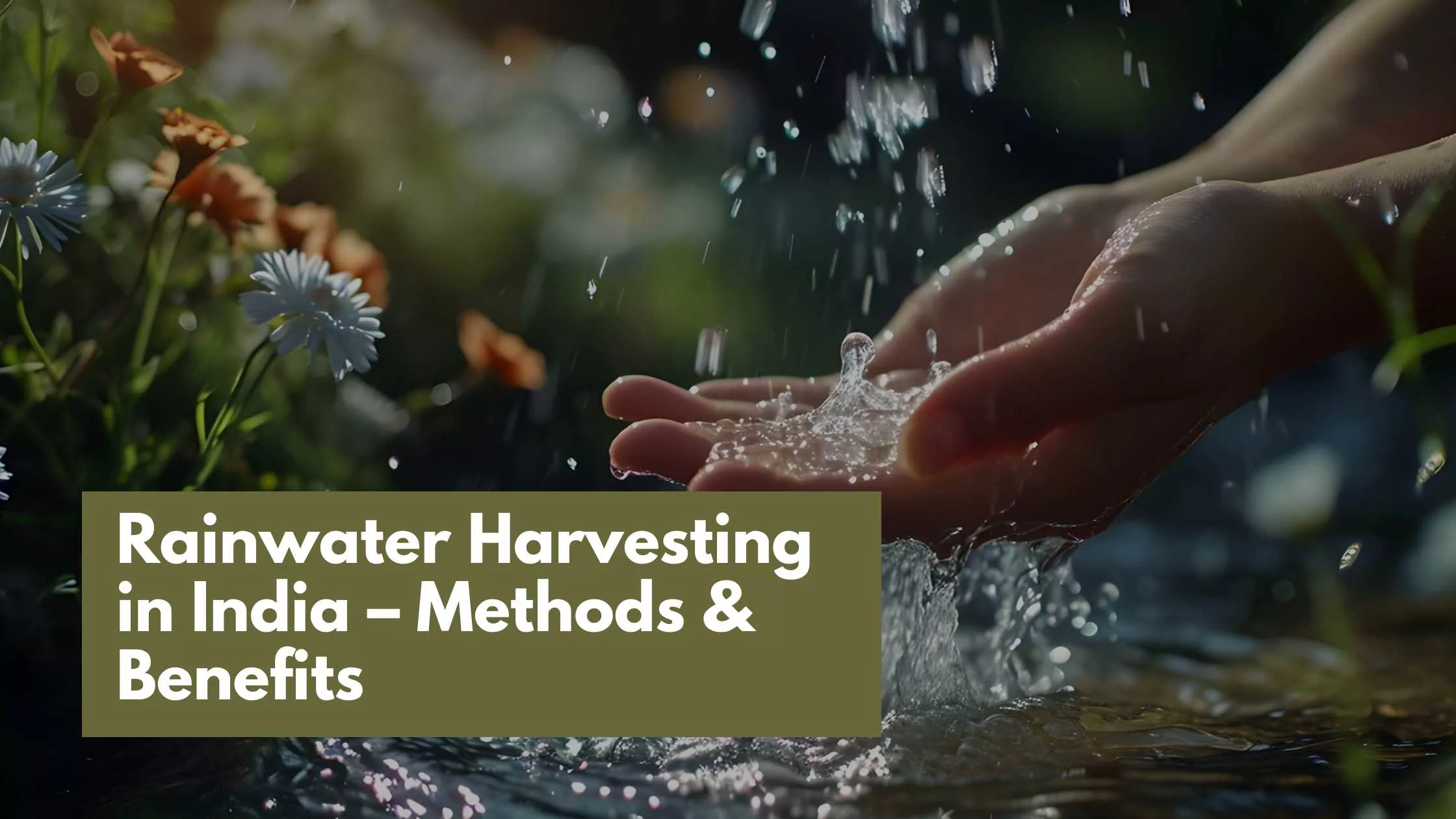Introduction
Rainwater harvesting is collecting, storing, and using rainwater for various purposes – irrigation, domestic use, and groundwater recharge. It is an ancient technique used by civilizations for thousands of years to manage and conserve water resources.
In simple terms, it involves the collection of rainwater from rooftops, paved surfaces, or other catchment areas. Moreover, we are then storing it for later use. This harvested water can be used for various purposes, such as irrigation, flushing toilets, and washing clothes.
Rainwater harvesting has several benefits, including reducing the demand for municipal water supply, reducing water bills, conserving water resources, and preventing soil erosion and flooding. It also improves groundwater quality by recharging aquifers and reducing the number of pollutants that enter water bodies.
What is Rainwater Harvesting in India?
Rainwater harvesting is an ancient technique. It has been practiced in India for thousands of years, particularly in regions with low rainfall and scarce water resources. In recent years, the Indian government has also taken several initiatives to promote rainwater harvesting. These initiatives are run to conserve water and address the water crisis in the country.

The Government of India has made it mandatory for all new buildings in urban areas with a plot area of more than 100 sq.m. to have provisions for rainwater harvesting. The government has also launched various schemes and programs to promote rainwater harvesting in rural areas. Read further to know about ‘Government schemes in the agriculture sector.‘
Rainwater harvesting can also help to reduce soil erosion and flooding by capturing and storing rainwater that would otherwise cause surface runoff. This helps to recharge groundwater and prevent soil erosion, contributing to land degradation and soil fertility loss. It can also help to maintain the soil moisture level.
Several states in India have also taken initiatives to promote rainwater harvesting. For example, the Government of Tamil Nadu has implemented the Tamil Nadu Water Supply and Drainage Board Act. That mandates rainwater harvesting structures in buildings with a more than 100 sq.m roof area. In Rajasthan, the government has implemented the Mukhyamantri Jal Swavlamban Abhiyan to promote rainwater harvesting and conservation in the state.
Apart from government initiatives, several non-governmental organizations (NGOs) and individuals have also taken up the cause of rainwater harvesting in India. Some organizations have conducted awareness campaigns, training programs, and workshops to promote rainwater harvesting and educate people on its benefits.
Overall, rainwater harvesting has gained significant momentum in India in recent years. Moreover, it has the potential to play a crucial role in addressing the water crisis in the country.
Benefits of Rainwater Harvesting
There are several benefits of rainwater harvesting, including:
Water conservation
Rainwater harvesting can help conserve water by capturing and storing rainwater that would otherwise be lost to runoff and evaporation. This can reduce the demand for water from traditional sources, such as groundwater and surface water, and help to ensure a more sustainable water supply.
Cost savings
Harvesting can also help reduce water bills by providing an alternative water source for domestic or commercial use, such as flushing toilets, washing clothes, or irrigating gardens. This can help to reduce dependence on costly water supply systems, particularly in areas with high water tariffs.
Improved water quality
Rainwater can also help to improve the quality of water resources by reducing the number of pollutants that enter water bodies. This is particularly important in urban areas, where stormwater runoff can carry pollutants from roads, roofs, and other impervious surfaces.
Reduced soil erosion and flooding
Rainwater harvesting can also help to reduce soil erosion and flooding by capturing and storing rainwater that would otherwise cause surface runoff. This can help recharge groundwater and prevent soil erosion, which can contribute to land degradation and loss of soil fertility.
Energy savings
Harvesting can also help reduce energy consumption by reducing the need to pump and treat water from traditional sources. This can help to lower greenhouse gas emissions and promote a more sustainable energy future.
Types of Rainwater Harvesting
There are two main types of rainwater harvesting systems:
Surface runoff harvesting
This type of rainwater involves collecting rainwater from open areas such as lawns, parks, and pavements. The collected rainwater is stored in ponds or tanks and can be used for irrigation, livestock, or recharge groundwater.
Rooftop harvesting
This type of rainwater involves collecting rainwater from the rooftops of buildings. The collected rainwater is filtered and stored in tanks or underground reservoirs. Then, it can be used for various domestic or industrial purposes, such as flushing toilets, washing clothes, and watering gardens.
Conclusion
Rainwater harvesting is a traditional method of collecting or storing water. It is beneficial for watering crops or providing water to farming fields. Farmers can save water for adverse conditions such as Drought or less rain through this method.
In India, many places or states face water scarcity. Moreover, as an agricultural country, many states need water commercially for agriculture and its allied sectors. States like Rajasthan, facing Drought or lack of rain, commonly use rainwater harvesting to collect water.
Overall, rainwater harvesting offers a range of benefits that can help conserve water resources, reduce costs, and promote a more sustainable and resilient water supply.




Thanks for sharing. I read many of your blog posts, cool, your blog is very good.